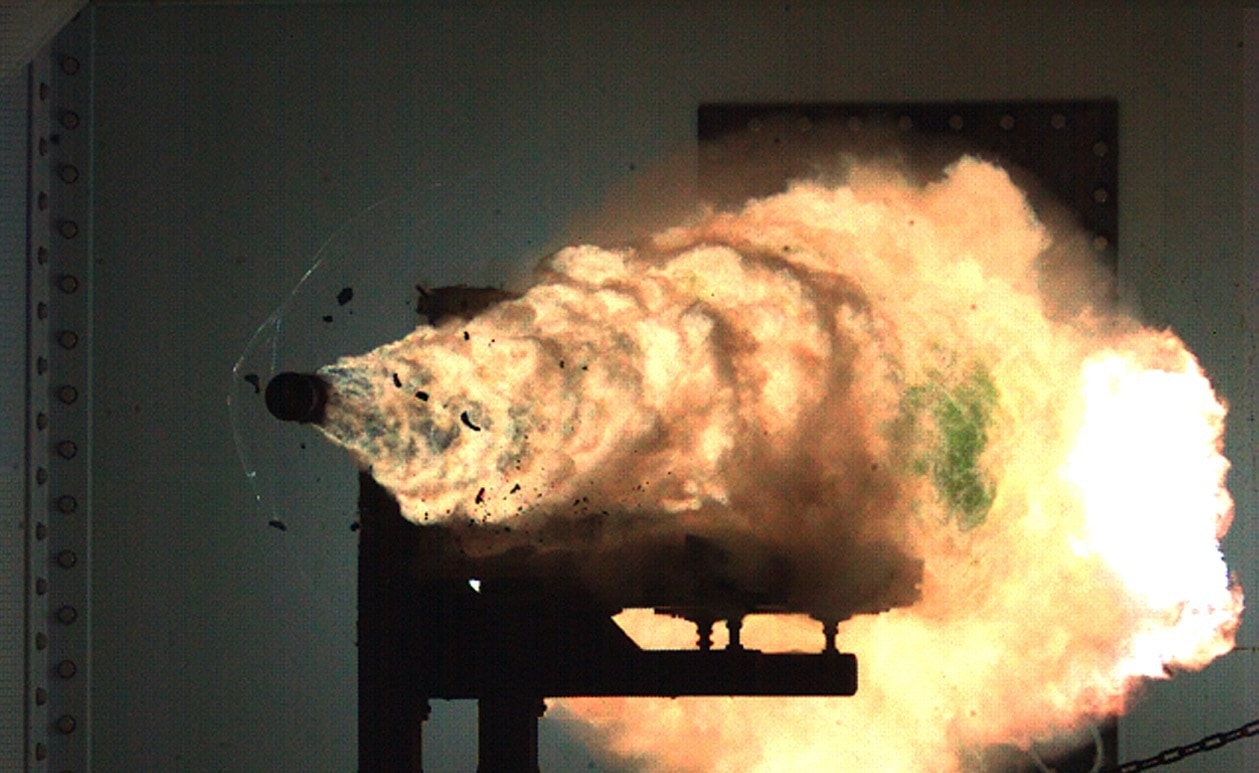Chinese scientists have unveiled what they claim is the world’s smallest and powerful Gauss pistol.
Also known as a coilgun, Gauss weapons are basically similar to electromagnetic railguns in which magnetic fields – not gunpowder or rocket fuel – propel a projectile.
In a paper published in the Transactions of the China Electrotechnical Society in November 2021, researchers described a battery-powered electromagnetic device. “The prototype weapon developed by professor Zhang Xiao and her team at the Naval University of Engineering in Wuhan has a 12-centimer (4.7-inch) barrel, about the size of a pistol, which contains three battery-powered coils that generate an electromagnetic field,” according to the South China Morning Post.
“Researchers found the bullet’s kinetic energy as it was could reach almost 150 joules, more than twice the energy needed to fire a fatal shot,” the Post said. “The bullet speed can vary depending on factors such as size and weight, and the scientists said one of the major advantages of using a coil gun was that, unlike a conventional gun, it could be adjusted to fire deadly shots or non-lethal ones.”
Electromagnetic weapons were once found only in science fiction: for example, in the science-fiction roleplaying game Traveller, set thousands of years in the future, players can buy Gauss rifles that fire 4-millimeter needles (0.16-inch) needles at a velocity of 1,500 meters [4,921 feet] per second. In the game, they are useful firearms that are more powerful than an assault rifle but cheaper than a high-energy rifle.
But real life is catching up with science fiction as electromagnetic weapons are nearing battlefield deployment. These include railguns – which use a powerful electric current to accelerate a projectile between two conducting rails – and a coilgun, which use a linear series of electric coils to launch a projectile. They offer advantages over gunpowder weapons, such as longer range, cheaper projectiles, no wear on gun barrels, and no need to handle dangerous explosive propellants.
The U.S. Navy, for example, developed an electromagnetic railgun for Zumwalt-class destroyers. China has been working on naval railguns that could fire projectiles at hypersonic speeds (faster than Mach 5).
Gauss rifles are even available on the civilian market. Los Angeles-based Arcflash Labs sells its GR-1 Anvil Gauss rifle for $3,750 (not including the charger). The weapon weighs 20 pounds, has a 10-round magazine and a maximum rate of fire 100 rounds per minute. “The GR-1 is capable of accelerating any ferromagnetic projectile (under 1/2-inch in diameter) to 200-plus feet per second, and can deliver up to 65 foot-pounds of muzzle energy,” says the product description.
But railguns and coilguns have disadvantages, such as weight, complexity, and especially a voracious appetite for electrical power (which also afflicted early high-energy laser weapons). Hence the U.S. Navy recently abandoned its naval railgun in favor of hypersonic missiles.
“Tiny differences in the size and shape of the coils can make a dramatic difference to performance, and the battery used in the gun is a complex device with many settings that can also have a significant impact on the weapon’s effectiveness,” said the Post. “This, coupled with other elements such as the design of the bullet and barrel, made the coilgun too complex for traditional weapons software to handle.”
So, Chinese scientists turned to Artificial Intelligence to solve these problems. “Zhang said that AI can start with an imperfect design and make continuous improvements by learning from previous mistakes,” the Post said. “The AI gave the human designers a huge set of optimized data points that nearly doubled the weapon’s efficiency compared with the U.S. rifle [the GR-1 Anvil] by maximizing the joint performance of many different components. This resulted in a massive reduction in the weapon’s size and increased its output energy.”
Gauss weapons won’t replace conventional rifles and pistols anytime soon. For a soldier or policeman, other factors are important, such as weight, ease of maintenance, cost – and reliability enough that a Gauss rifle can be dragged through the mud and still fire.
A seasoned defense and national security writer and expert, Michael Peck is a contributing writer for Forbes Magazine. His work has appeared in Foreign Policy Magazine, Defense News, The National Interest, and other publications. He can be found on Twitter and Linkedin.

